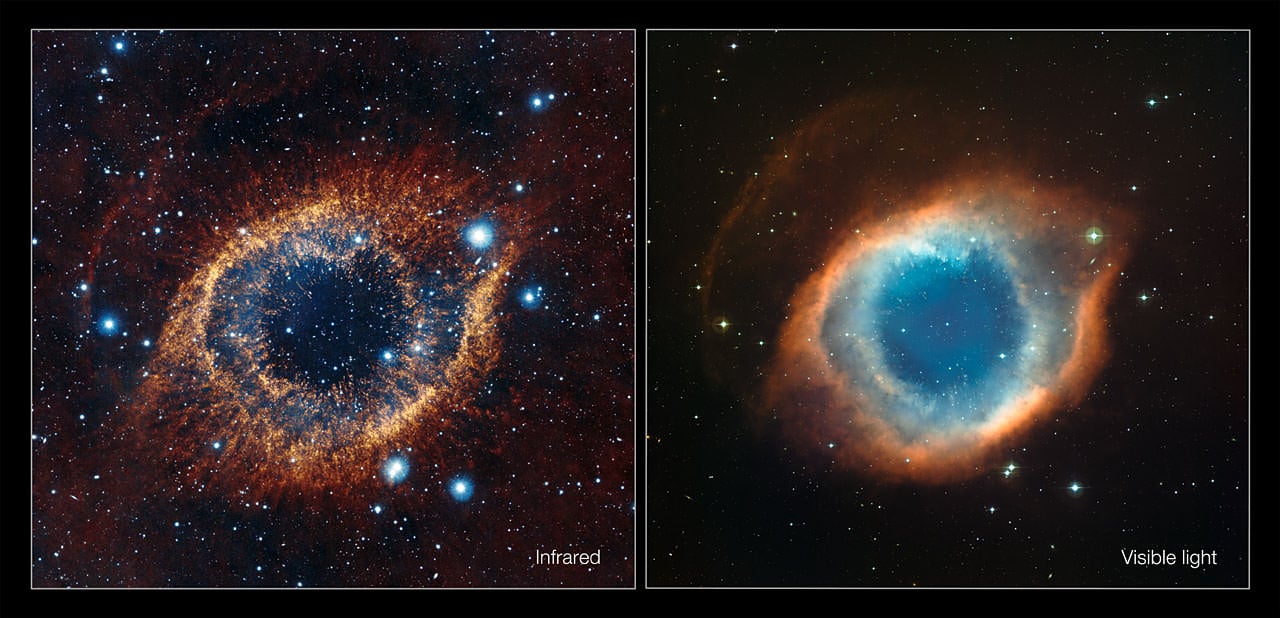[/caption]
Who is looking at who here? A brand new image of the Helix Nebula (breathlessly called the "Eye of God" in viral email messages) was taken by ESO's VISTA telescope, at the Paranal Observatory in Chile. In infrared light -- compared previous images of the Helix Nebula taken in visible light -- the "eye" appears to have put on a colored contact lens, changing the color from blue to brown. What infrared really reveals are strands of cold gases within the nebula, as well as highlighting a rich background of stars and galaxies.
The Helix Nebula is a planetary nebula, and is located in the constellation Aquarius, about 700 light-years away from Earth. This strange object formed when a star like the Sun was in the final stages of its life. In fact, our own Sun might look like this one day, several billion years from now.
[caption id="attachment_92771" align="aligncenter" width="580" caption="ESO's VISTA telescope, at the Paranal Observatory in Chile, has captured a striking new image of the Helix Nebula. Credit: ESO/VISTA/J. Emerson. "]
[/caption]
The Helix Nebula is a huge cavern of glowing gases. The main ring of the Helix is about two light-years across, roughly half the distance between the Sun and the nearest star. However, material from the nebula spreads out from the star to at least four light-years. This is particularly clear in this infrared view since red molecular gas can be seen across much of the image.
At its center is a dying star which has ejected masses of dust and gas to form tentacle-like filaments stretching toward an outer rim composed of the same material. Unable to hold onto its outer layers, the hot central star is slowly shedding shells of gas that became the nebula. It is evolving to become a white dwarf star and appears as the tiny blue dot seen at the center of the image.
The VISTA telescope also reveals fine structure in the nebula's rings. The infrared light picks out how the cooler, molecular gas is arranged. The material clumps into filaments that radiate out from the center and the whole view resembles a celestial firework display – or a giant eye.
Source:
ESO
 Universe Today
Universe Today
